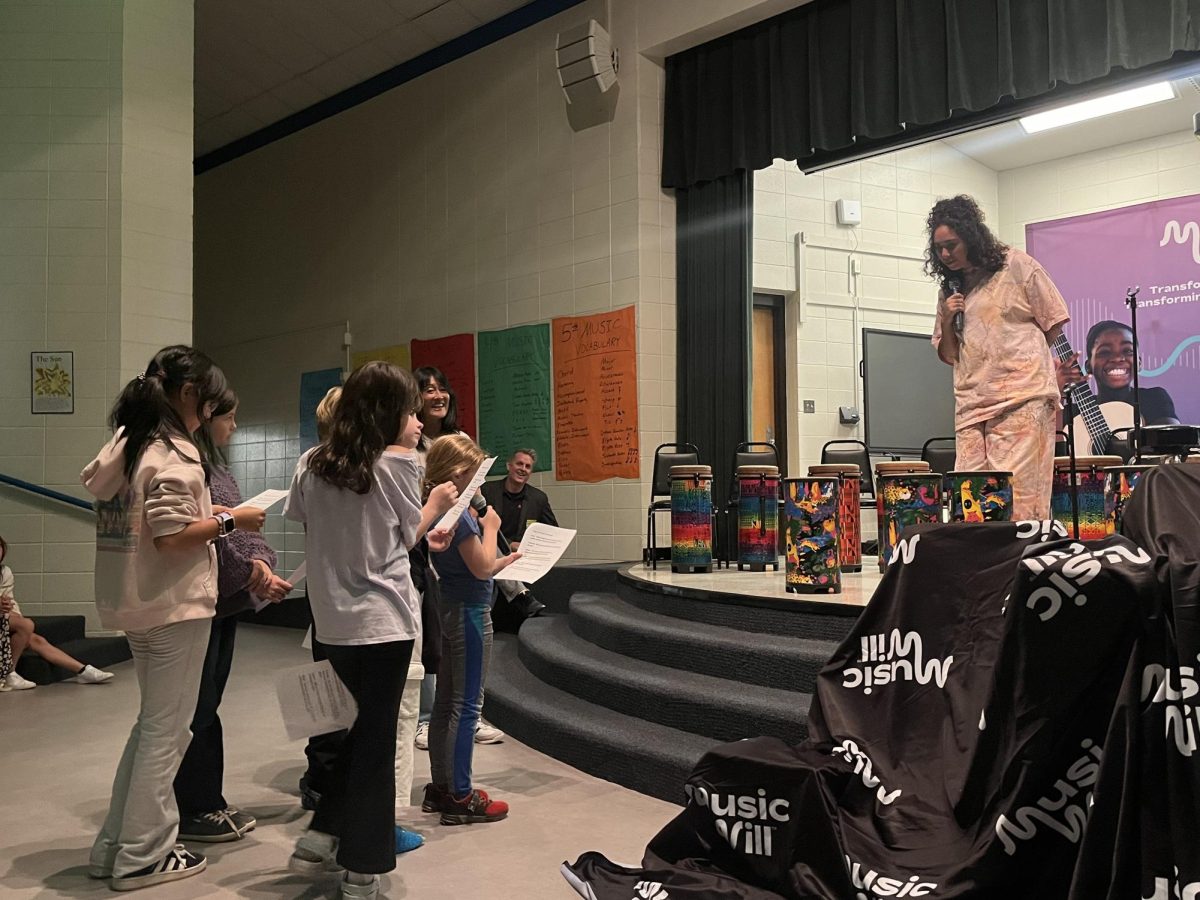
Peyton Rodgers
Assistant Sports Editor
[email protected]
Members of the UNC Asheville community express their passions in many artistic forms.
Members of the UNCA dance program will show their passion around the social justice issues in the U.S. and Germany through the two-day site-specific dance series, “Moving Voices.”
The program is co-directed by UNCA Dance Program Director Celia Bambara and visiting scholar, Jana Schmueck of Germany.
The performances were held in Pack Square in downtown, Black Mountain College Museum and Arts Center, Brown Dining Hall and on the Ramsey Library stairs.
The site-specific dances and discussion covered women’s voices, class difference, race, location, immigration in East Germany and the struggle to find your voice in the midst of oppression.
“I think the most important part of this message, is this notion of intersectional feminism and the fact that we as women are both trying to create a socially aware dance,” Bambara said. “It addresses social issues and can perhaps be more effective than a social manifestation, like in a rally.”
The chosen locations have a significance to the series.
“Pack square in Asheville is a very public space, but is also a space of gathering, it’s a space of protest, it’s a space that has massive layers of history within this town,” Bambara said.
Black Mountain is a collaborative place where projects have been thought of and created, said Bambara.
The two locations at UNCA, Brown Dining Hall and the Ramsey Library stairs, are areas for gathering and protesting from the community.
Bambara said she hopes the audience feels the emotions from the dances in the series and their own experiences.
“Anything that other people have stored in their bodies and in their memories can resurface,” Bambara said.
Bambara said she hopes the series exposes people to dance from a new perspective when considering the body, voice and the way different social issues impact society.
Bambara and Schmueck both performed in the dances.
Ann Dunn, humanities lecturer at UNCA, said dance is not meant to be analyzed, but experienced and felt.
“It might get in the way of enjoying and appreciating the movement,” Dunn said. “Just look and see what you see”
Dunn began dancing at the age of five with classical ballet. She received a full scholarship to attend New York City Ballet School. She later became Principal Ballerina at Hartford Ballet and the American Ballet. Dunn is the owner of Asheville Ballet, the oldest professional non-profit ballet company in the state of North Carolina.
Dunn favors modern dance, the type of dance displayed through the “Moving Voices” series, because she said it displays the human experience better than classical ballet.
“Modern dance at that time was barefoot, down to the ground, it was in the real world, it was without fairies or swans and princesses and rich people,” Dunn said.
Dunn said the biggest challenge in dance is your body.
“The body has certain limitations and you want it to be able to do everything,“ Dunn said.
She considers training the body to do the movements you desire to be one of the most challenging parts of dance.
Myles House, junior art student at UNCA, is a dancer for the “Moving Voices” series.
House, along with the other dancers, practiced three hours at a time to perfect the movements.
“It’s definitely a very powerful experience, just because a lot of the work we are doing is based on different voices and democracy,” House said.
House is interested in seeing how the audience will react to the dances. She said they may attempt to dance beside them and interact with the dancers.
House appreciates her time working with Schmueck not only with the series but through the master classes Schmueck is teaching.
“I really like the stuff she’s choreographed so far because she lets’ us kind of collaborate with her,” House said. “I felt more involved in the process.”
House considers dance to be a form of expression.
“I like that it connects your body to your mind in a way that a lot of things don’t,” House said. “I like that moment when you can have an idea in your head meet your body.”
House recognizes the process when making choreography is influenced by research and academic processes.
House said she hopes the audience understands the art in ballet and the time and dedication required for a performance.
“I think they should expect to have a dance piece that hopefully makes them think, not only about us but about themselves and about the world that we live in,” Bambara said. “And maybe about the really specific spaces that were performing in and the dynamics, not only on this campus, but in this state.”



















